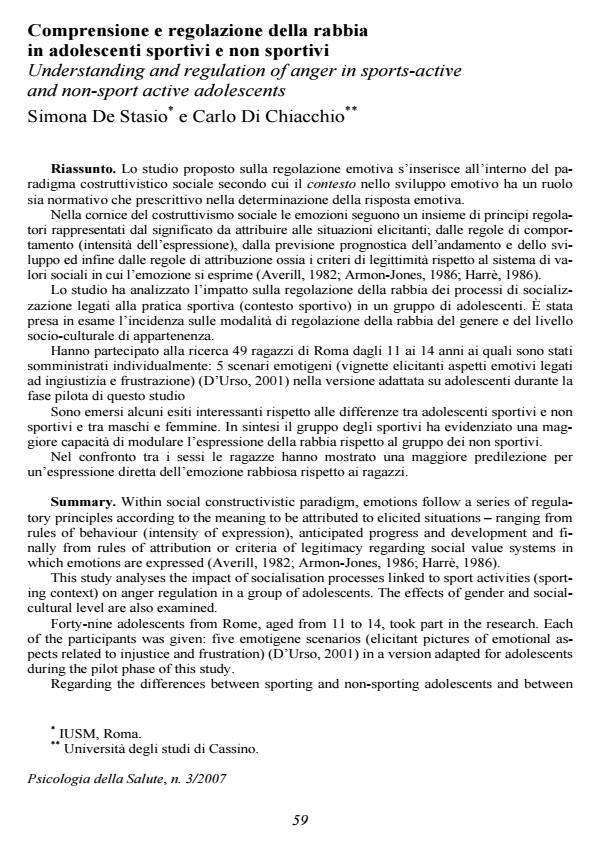Comprensione e regolazione della rabbia in adolescenti sportivi e non sportivi
Journal title PSICOLOGIA DELLA SALUTE
Author/s Simona De Stasio, Carlo Di Chiacchio
Publishing Year 2008 Issue 2007/3 Language Italian
Pages 12 P. 59-70 File size 164 KB
DOI
DOI is like a bar code for intellectual property: to have more infomation
click here
Below, you can see the article first page
If you want to buy this article in PDF format, you can do it, following the instructions to buy download credits

FrancoAngeli is member of Publishers International Linking Association, Inc (PILA), a not-for-profit association which run the CrossRef service enabling links to and from online scholarly content.
Understanding and regulation of anger in sports-active and non-sport active adolescents ABSTRACT: Within social constructivistic paradigm, emotions follow a series of regulatory principles according to the meaning to be attributed to elicited situations ranging from rules of behaviour (intensity of expression), anticipated progress and development and finally from rules of attribution or criteria of legitimacy regarding social value systems in which emotions are expressed (Averill, 1982; Armon-Jones, 1986; Harrè, 1986). This study analyses the impact of socialisation processes linked to sport activities (sporting context) on anger regulation in a group of adolescents. The effects of gender and socialcultural level are also examined. Forty-nine adolescents from Rome, aged from 11 to 14, took part in the research. Each of the participants was given: five emotigene scenarios (elicitant pictures of emotional aspects related to injustice and frustration) (D’Urso, 2001) in a version adapted for adolescents during the pilot phase of this study. Regarding the differences between sporting and non-sporting adolescents and between males and females, several interesting outcome emerged. In short, the sporting group demonstrated a greater capacity to modulate the expression of anger compared to the nonsporting group. With respect to gender, the girls showed a greater propensity than the boys for expressing their anger directly.
Simona De Stasio, Carlo Di Chiacchio, Comprensione e regolazione della rabbia in adolescenti sportivi e non sportivi in "PSICOLOGIA DELLA SALUTE" 3/2007, pp 59-70, DOI: